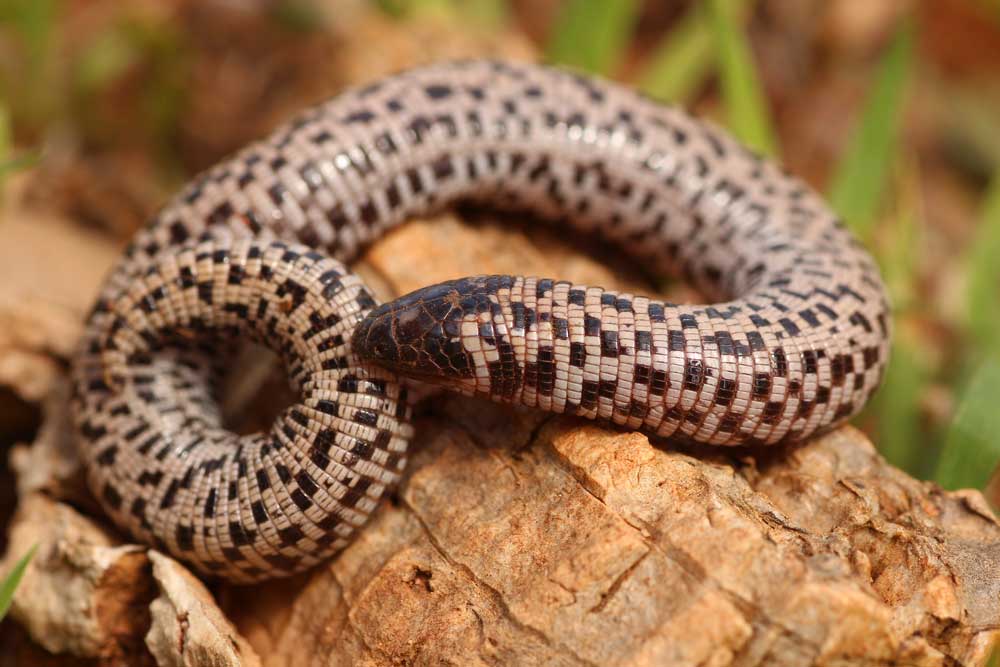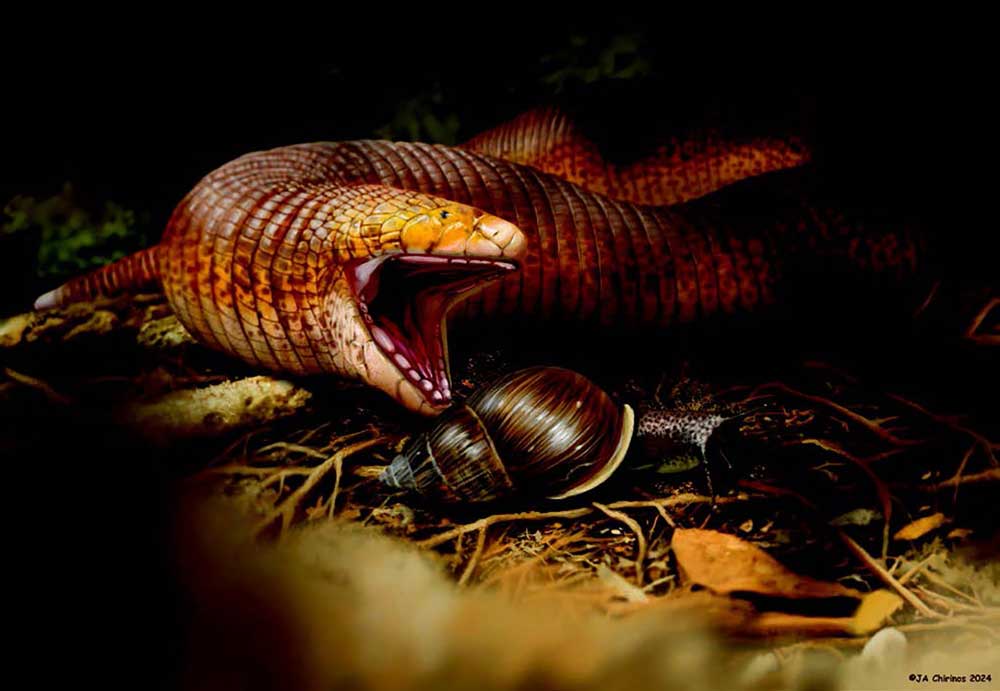"Visually, you can imagine the animal as a ‘sandworm’ from the ‘Dune’ science fiction novels and their movie adaptation."
Researchers have described a new species of worm lizard of the amphisbaenian genus that lived during the Eocene 56 to 33.9 million years ago) in the Chambi mountains of Tunisia. The worm lizard, Terastiodontosaurus marcelosanchezi is the largest worm lizard species in the Amphisbaenia group and has a skull length that exceeds five centimeters, according to a press release put out by the Senckenberg Research Institute and Natural History Museum detailing the discovery.
“Our discovery from Tunisia, with an estimated skull length exceeding five centimeters, is the largest known worm lizard species,” Prof. Dr. Georgios L. Georgalis from the Institute of Systematics and Evolution of Animals at the Polish Academy of Sciences, Krakow, said in the press release. “All evidence indicates that the new species is related to the modern-day checkerboard worm lizard.”

The recent checkerboard worm lizard (Trogonophis wiegmanni) also feeds on snails. Photo: Alberto Sanchez Vialas/Senckenberg Research Institute and Natural History Museum
The researchers used micro-computed tomography to document the unique anatomy of the worm lizard, including a very large tooth in the upper jaw, flat molars, and other unique features that differentiate the species from others in the Amphisbaenia group.
“Visually, you can imagine the animal as a ‘sandworm’ from the ‘Dune’ science fiction novels and their movie adaptation. Based on the tooth structure and the unusually thick enamel, we can deduce that the animals had enormous muscle strength in their jaws,” Georgalis said. “We know that today’s checkerboard worm lizards like to eat snails by breaking open their shells. We can now assume that this lineage specialized in feeding on snails over 56 million years ago and could crack them open effortlessly with their powerful jaws. This feeding strategy is therefore extremely consistent – it has defied all environmental changes and accompanies the lineage to this day.”
The complete research paper, “The world’s largest worm lizard: a new giant trogonophid (Squamata: Amphisbaenia) with extreme dental adaptations from the Eocene of Chambi, Tunisia” can be read on the Zoological Journal website.



